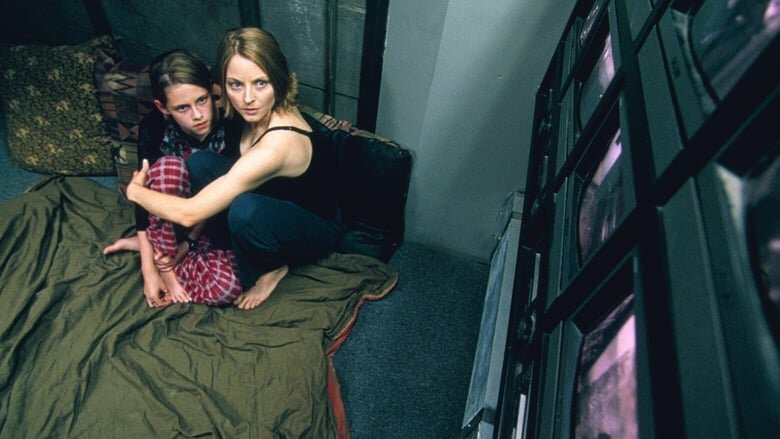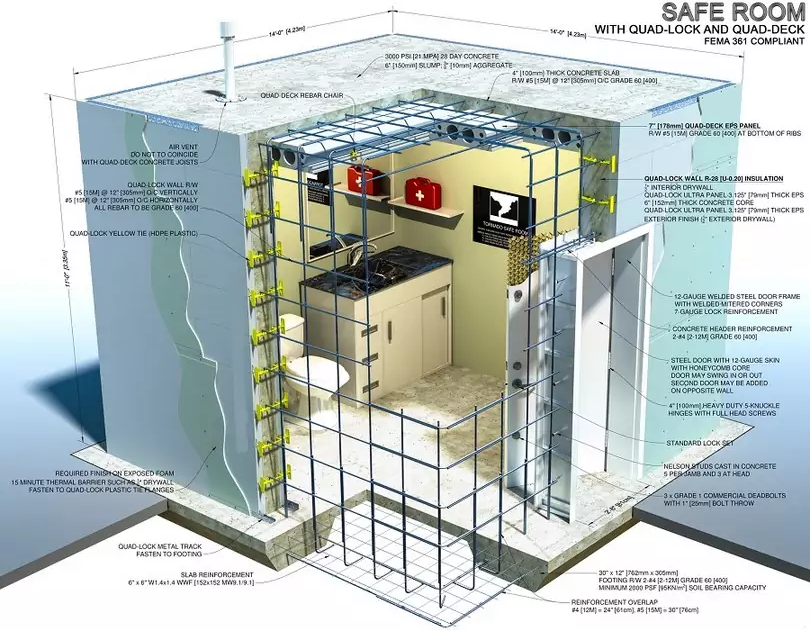Safe Rooms
Whenever I hear someone talk about a safe room or “panic room”, I always think of the 2002 Jodi Foster movie Panic Room. For those of you not familiar with the film, Jodi Foster buys a house that has a “panic room” in it. People break into her house and her and her daughter lock themselves into the “panic room”, while the bad guys are looking for a fortune that is supposedly in the house.
You may be wondering why I keep putting the quotations around “panic room”. This is because it should be called a safe room. A safe room actually meets the Federal Emergency Management Agency (FEMA) criteria. Now, there are three different criteria when it comes to a safe room, and what you want protection from. They are tornadoes, hurricanes, and break-ins (or security safe rooms).
Protection against natural disasters such as tornadoes and hurricanes does not apply to everyone. These safe rooms will be more common in the at-risk areas and should definitely be considered if you live in these areas. Storm safe rooms are built to very specific requirements in order to pass inspections and keep the occupants safe. One of the more important requirements to storm safe rooms is how they are anchored. This keeps the storm safe room on the ground instead of flying through the air with you inside. This means you probably cannot have a storm safe room on the second level of your home. I’m not saying this isn’t possible, but I wouldn’t get my hopes up. Flooding is also a concern with placement of your storm safe rooms. The last thing you want is to survive the storm, only to end up drowning in your safe room. Professional safe room companies and installers will do a survey and know what the flood level is and be able to recommend your best options for a safe room.
There are two types of storm safe rooms. In ground safe rooms and above ground. Both have their advantages and disadvantages, and it is up to you to determine which is best for you based on where you live and what you are using it to protect you against.
Security safe rooms are made to keep you safe during a break-in until Police can arrive. Placement of these safe rooms is key. You don’t want to have to run downstairs, past points of entry and probably the person or people breaking in, in order to get into your security safe room. That very much defeats the purpose. Security safe rooms are best located in a closet or near bedrooms and on floors where there are no easy points of entry into the house. This is why a storm safe room will not always work as a security safe room, due to storm safe rooms having to be anchored to the ground.
So, what makes a safe room an actual safe room? It is constructed from hard materials that will protect against the anticipated forces applied to it. This means that a tornado safe room is built to withstand very high winds and flying debris. The same goes for a Hurricane safe room. A security safe room is made to stop bullets. Most storm safe rooms are built with reinforced concrete or heavy gauge steel. Another key component to all safe rooms is the door. Doors are always the weakest point on any building because they are made to open. Doors on safe rooms are made to withstand a beating and still open. They are well anchored and will not distort when taking a beating.
Now that you know what you need for a safe room, lets discuss what you might want to keep in this room. First thing to consider is the amount of time you anticipate being in your safe room. Tornadoes are not typically long-lasting storms. They are there and then gone in relatively short periods of time, so you will not be in them long. Hurricanes are a different story. You may be in your hurricane shelter for some time. This is also why the size requirements for each are different. You should have a basic kit in either one which has water, food, lights, batteries, first aid kit, and blankets. The essentials. Also remember, you may be walking out to find your house missing so having extra clothes may be helpful. I also recommend having some tools in the event something is blocking the door. A crowbar and hand saw might come in handy.
Now, if you have a security safe room. It’s a good idea to have a first aid kit, some water, and possibly food. Most home invasions are over relatively fast, but if the burglars do not find anyone in the home, they can go on longer. Now that you made it to your security safe room and are safe from the intruders, how are you going to call for help? A security safe room is made of ballistic material and metal. These are great to stop bullets, but terrible for cell phone signal. Having a way to call 9-1-1 is a must from your security safe room. If the ceiling of your security room isn’t hardened, you might be able to get signal. There are different ways to solve this issue. You can have a landline run to your room or maybe an external cell phone antenna. These rooms can be very basic, to having lots of technology in them. If you have security monitors, having a way to view and record them from your security safe room wouldn’t be a bad idea. Remember the Jodi Foster movie? She had a pretty nice “panic room”. The safe room in that movie was designed by the company Safe Room and they actually put that exact room into people’s houses.
There are many companies out there that specialize in and build safe rooms that can be put into existing homes or new construction. Like any construction project, you need to do your research on the company and installer, and if the company sub-contracts the install out. Good companies are usually busy, so it might be worth the wait. Make sure you know what you want, but also be flexible. Knowing the standards for each type of safe room will keep you from being let down when the safe room company tells you that you can’t have hurricane safe room on the third floor…….
— “Light” Chris


